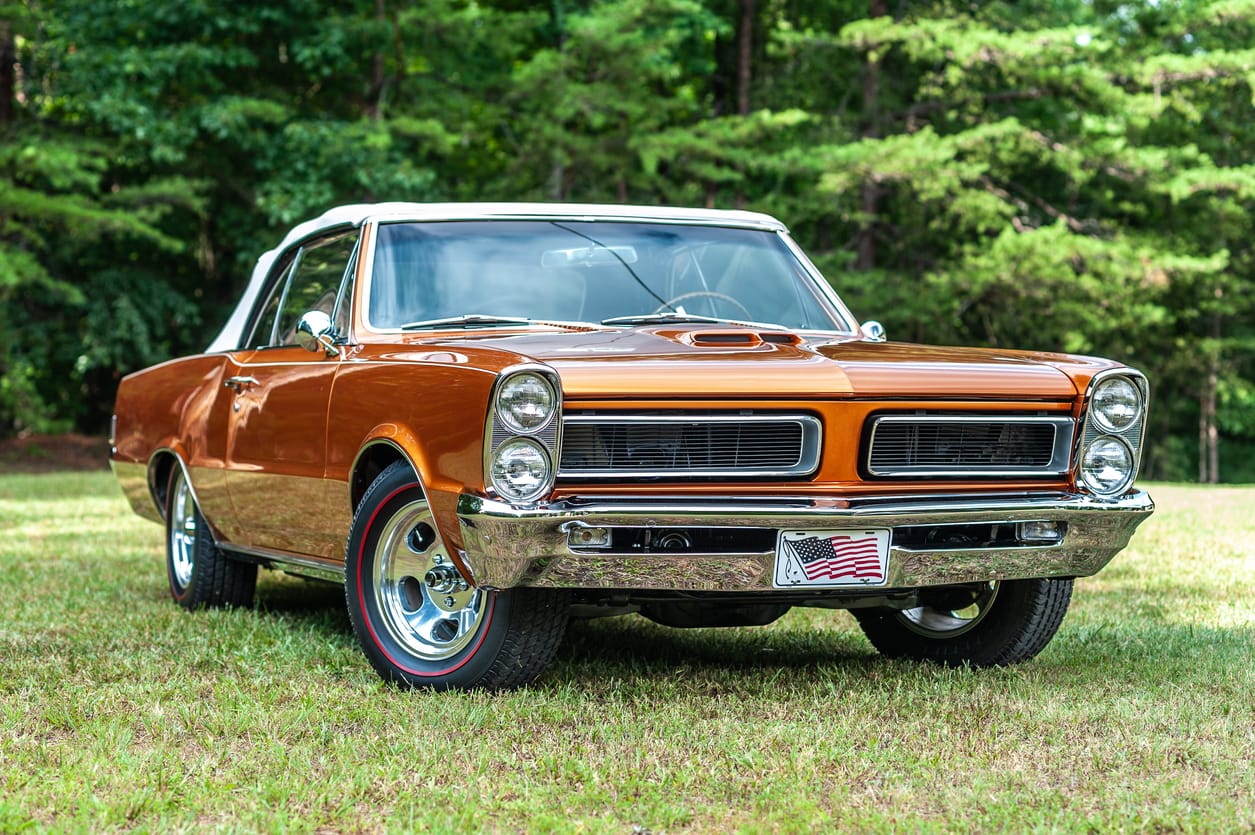Preserving a piece of automotive history is what makes classic cars so desirable, even beyond their aesthetic appeal. However, adding modern conveniences to these classic machines, such as air conditioning, digital displays, and electronic fuel injection (EFI), poses a unique challenge. The electrical system, particularly the charging mechanism that drives these cutting-edge capabilities, is the key to this puzzle. For a classic car with modern conveniences, a well maintained charging system is essential, and it needs a consistent and dependable 12-volt supply to run smoothly. Failure to do so might jeopardize the performance and dependability of the technical modifications that make driving a vintage car more pleasurable and practical.
This blog article explores more thoroughly into the topic of charging mechanisms in the context of classic automobiles. Our goal is to clarify the intricacies and subtleties involved in updating and caring for these cars’ electrical systems. Being aware of the fundamentals of a strong charging system extends the life of the vehicle and improves performance. Through an examination of crucial battery care issues, wiring concerns, and the need of a secure ground connection, this piece provides insightful analysis and useful guidance. With the information we hope to impart, classic car lovers will be able to maintain their cars to an extent that matches or surpasses that of the day they were taken off the production line.

The battery and charging system must be maintained in order to ensure the durability and dependability of classic cars fitted with modern day amenities. This section explores the importance of keeping a consistent charge as well as the critical function trickle chargers play in extending battery life.
Why a Steady Charge is Crucial: Maintaining a constant voltage is crucial for the functionality and dependability of classic cars, especially those that have been updated with contemporary technology. Not only is a constant, continuous 12V supply advantageous, but it’s also essential because a voltage dip below 11V can cause problems or even whole system shutdowns. This strict need stems from the fact that current upgrades’ sophisticated electronics are especially susceptible to variations in power supplies, underscoring the necessity of careful charging system maintenance.
The Role of Trickle Chargers: Extended periods of inactivity can cause a classic car’s battery to drain, although this danger can be reduced by using a trickle charger. By providing a little, consistent current, trickle chargers preserve the battery’s charge level and avoid the typical problem of battery drain during extended periods of inactivity. For classic car aficionados who might not drive their cars every day, this technique is essential to making sure the car is ready to run smoothly once it’s taken for a spin. For the owner of a classic auto, trickle chargers are therefore a necessary addition to their toolkit as they offer peace of mind and avoid the annoyance of a dead battery.

The electrical and charging systems of classic cars, particularly those with contemporary improvements, rely heavily on their wiring and cable systems. For the car to operate well and be safe, these parts must be fitted and maintained appropriately. The important topics of wiring and cable management are covered in detail in this section, with particular attention paid to gauge concerns, length, size, fabrication, and the effects of moving the battery.
Sizing and Fabrication: For the charging system to be reliable, wiring and cables must be made and sized correctly. The current that each wire and cable will carry as well as the operating environment must be considered while choosing them. This stage is essential for preventing any potential hazards as well as ensuring the effectiveness of the system. Oversized cables can be excessively expensive and challenging to install, while too-small wires might cause overheating. By guaranteeing accurate sizing and expert manufacture, these problems are prevented, protecting the system’s long-term dependability.
Length and Gauge Considerations: As a cable gets longer, its electrical resistance rises, requiring gauge size modifications to keep it operating at peak efficiency. For example, a 10-gauge wire could work well for a short run, but as the distance grows, switching to an 8-gauge wire might be required to guarantee the least amount of voltage loss. This idea makes sure that electrical components don’t overwork or become inefficient when they have the power they require. By guaranteeing that components function in accordance with their intended specifications, following rules regarding cable length and gauge helps preserve the integrity of the electrical system.
Relocating the Battery: There are unique challenges with relocating the battery, which is a popular performance or aesthetically pleasing upgrade in classic cars. Longer cable lengths resulting from the new location frequently impact voltage control and need the use of bigger gauge wires to offset higher resistance. Furthermore, cable performance may be impacted by temperature differences between the passenger cabin and the engine compartment. In these configurations, it becomes even more important to choose the right insulation type and cable size to guarantee that the relocation of the battery does not affect the electrical system of the car. When battery relocation is planned and carried out properly, it may improve a classic car’s appearance and functionality while maintaining its dependability.
In a Nutshell
A safe and effective charging system for classic cars starts with an understanding of the fundamentals of wiring and cable management. Through attention to appropriate dimensions, construction, and the particular factors that need to be taken into account while increasing cable lengths or moving the battery, enthusiasts may make sure their cars continue to be dependable and prepared to benefit from modern enhancements. The wiring and cable arrangement’s meticulous attention to detail is essential to maintaining the classic car’s allure while improving its functionality and safety.

Setting up a reliable ground circuit is essential to the electrical system’s health in the world of classic car care, not just a formality. In order to maintain the vehicle’s safety and optimal operation, grounding makes sure that the electrical charge returns to the battery in an effective manner.
The Importance of Grounding: The foundation of a car’s electrical circuit is a strong grounding system. The absence of it prevents the electrical charge from returning to the battery since the circuit cannot be completed. This can cause a wide range of issues, from unpredictable behavior from individual components to total system failures. Guaranteeing a solid ground not only stabilizes the electrical system but additionally improves the overall dependability and longevity of your classic car.
Tips for Effective Chassis Grounds: A vehicle’s electrical integrity depends on having clear, continuous grounding pathways. In order to guarantee that energy flows smoothly back to its source, proper connections remove any possible sites of resistance. To keep sensitive components operating properly, there must be a complete ground circuit that is unaffected by paint, rust, or corrosion. By putting these suggestions into practice, you may significantly increase the electrical system’s efficiency in your automobile, eliminating typical problems and guaranteeing smoother performance.
When it comes to creating a charging system that is foolproof for classic cars that are outfitted with contemporary comforts, it all comes down to paying precise attention to the minutiae, like wiring and grounding. As long as enthusiasts adhere to the concepts of accurate wire size, secure connections, and extensive grounding procedures, they will be able to enjoy the dependability and performance of their classic cars without having to worry about sudden power outages.

When it comes to transporting classic cars across the United States, including Hawaii and Alaska, Ship A Car, Inc. stands out as the most reliable option available. In order to provide you with peace of mind and reliability, their transport experts are committed and competent, and they make sure that your cherished automobile is treated with meticulous care. Now is the time to call (866) 821-4555 for service that is unmatched. It is also possible to enter your information online by clicking here in order to acquire an estimate for shipping a classic car.
Q: What makes a good charging system for classic cars with modern upgrades?
A: For the purpose of ensuring that all components receive dependable power transmission, a good charging system must include wire that is appropriately sized and constructed, secure connections, and a full grounding circuit.
Q: How does wire gauge affect the charging system in classic cars?
A: It is necessary to raise the wire gauge as the length of the run increases in order to compensate for resistance. This will ensure that an acceptable voltage is maintained, which is necessary for properly powering the vehicle’s systems.
Q: Why is grounding important in the charging system of classic cars?
A: Through the process of grounding, the electrical circuit is completed, which enables current to flow back to the battery. It is essential for the dependability of all components, particularly the delicate new upgrades such as EFI sensors.




